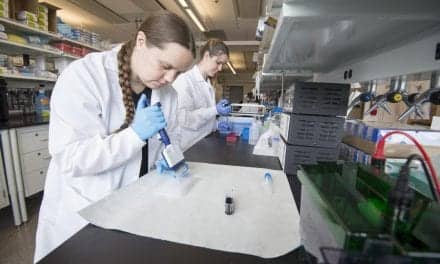University of California, San Francisco scientists discovered the first gene involved in regulating the optimal length of human sleep. The mutated gene was identified in two members of an extended family that allows them to thrive on 6 hours of sleep a day.
Working from this discovery, appearing in the August 14 issue of Science, the researchers genetically engineered mice and fruit flies to express the mutated gene and study its impact.
“Short-term and chronic disruptions in the length of optimal sleep can have serious consequences on cognition, mood, and physical health, including cancer and endocrine function,” said senior author Ying-Hui Fu, PhD, UCSF professor of neurology. “However, teasing out this impact can be challenging given access to such stimuli as coffee and chocolate.”
According to Fu, the findings offer an opportunity to unravel the regulatory mechanism of sleep. While the mutation may be rare, it could offer a probe more generally into the regulatory mechanisms of sleep quality and quantity, said Fu. Understanding these mechanisms could lead to interventions to alleviate pathologies associated with sleep disturbance.
During the study, the research team identified a small extended family in which a mother and her adult daughter had lifelong shorter daily sleep requirements than most individuals. According to UCSF, Fu’s lab then studied blood samples from these women and their extended family. They identified a mutation in a gene known as hDEC2, which is a transcription factor that represses expression of certain other genes and is implicated in the regulation of circadian rhythms.
The team then genetically engineered mice and fruit flies to express the mutated human gene, and Ying He, PhD, a postdoctoral fellow in the Fu lab, studied its impact on their behavior and sleep patterns. He’s study found that mice were observed sleeping less over the course of 24 hours and electroencephalography (EEG) and electromyography (EMG) measurements indicated reduced non-REM and REM sleep. While lacking a Lilliputian size EEG to monitor the fruit flies, He studied the flies’ activity and sleep patterns by tracking the frequency of their movements through infrared light.
The responses of the genetically engineered mice and normal mice were compared to the consequence of 6 hours of sleep deprivation. The engineered mice needed to compensate for their lost sleep to a much lesser extent, as seen in non-REM and REM measures, than their normal counterparts.
“These changes in sleep homeostasis in the mutant mice could provide an explanation for why human subjects with the mutation are able to live unaffected by shorter amounts of sleep throughout their lives,” said Fu.
According to Fu, the next step is determining the DEC2’s precise role. “We know the gene encodes a protein that is a transcriptional repressor and we know it makes the repressor’s activity weaker. But we don’t know if the weaker repressor is directly related to the shorter amount of sleep, because proteins can have many functions. It could be the protein functions as part of a larger transcriptional machinery, not necessarily as a repressor.” Fu explained that DEC2 could be involved in modulating “sleep quantity” alone, or it could be mediating both “sleep quantity” and “wakefulness-behavioral drive.”
“The mouse model also provides an opportunity to investigate whether there are other behaviors or physiological conditions associated with a short sleep syndrome,” said Fu. She suspected there will be.



